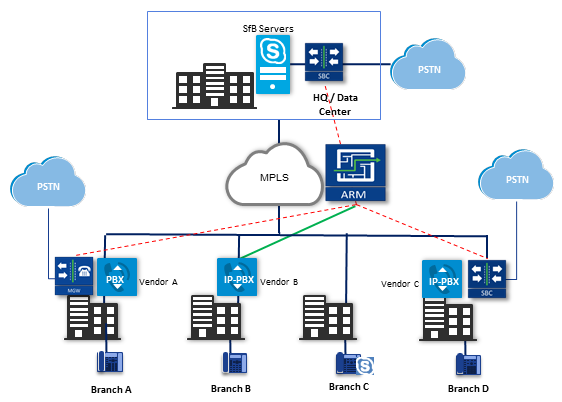Overview
This document shows how to use the AudioCodes Routing Manager (ARM). The ARM is a LINUX-based, software-only, telephony management product which expedites and streamlines IP telephony routing for enterprises with multiple globally distributed branches. The ARM determines the quickest, least expensive, and best call quality routes in packet networks.
Routing data, previously located on the SBC, Unified Communications (UC) application (e.g., Microsoft's Skype for Business), or Media Gateway, is now located on the ARM server. If an enterprise has an SBC in every branch, a single ARM, deployed in HQ, can route all calls in the globally distributed corporate network to PSTN, the local provider, enterprise headquarters, or to the IP network. Routing rules, configured by the IT manager in the ARM's Routing Table, perform the routing.
If an enterprise has only one or two branches, its IT manager can easily independently implement maintenance changes. In globally distributed enterprises, IT managers until now had to laboriously implement changes, multiple times, per branch. With the ARM, IT managers implement changes only once, saving significant labor and time resources and costs.
The following figure shows a typical, globally-distributed, multi-branch enterprise VoIP network.

VoIP networks like this typically require:
|
■
|
Distributed routing & policy enforcement |
|
■
|
Multiple VoIP network entities' configurations (i.e., SBC, Media Gateway) |
|
■
|
SIP Interworking between IP PBXs |
|
■
|
Large number of end user policies |
|
■
|
Efficient ARM routing management |
